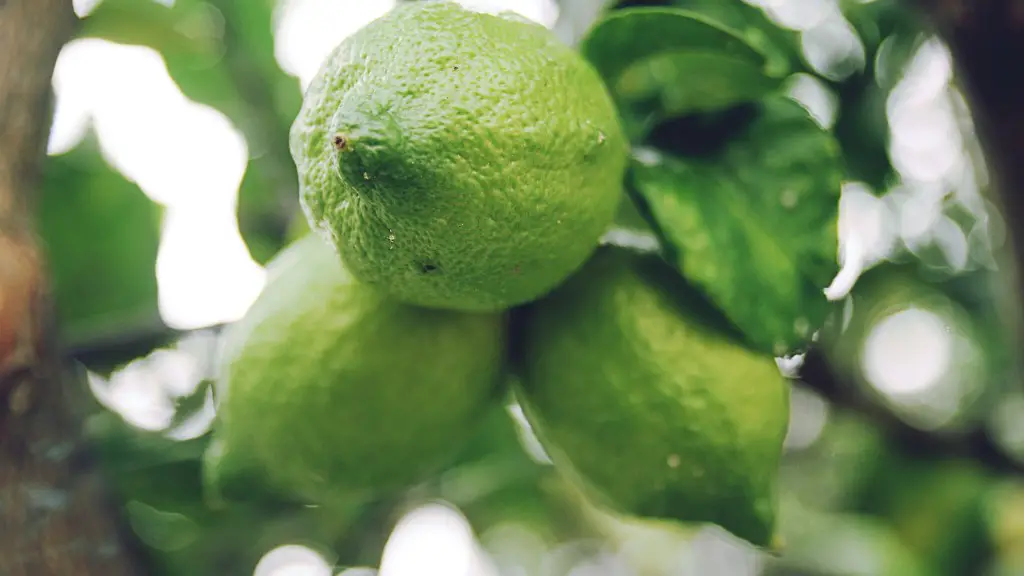Climate and Site
Avocados are native to Southern and Central Mexico and are rarely grown outside the tropics. In order for the tree to survive, it will need to be planted in a warm location with at least a few hours of direct sunlight each day. Temperature does not have to be consistent, but large changes in temperature (like freezing nights in the winter) can damage the tree and compromise the development of its fruit.
At the same time, when looking for a place to plant the avocado tree, it’s important to avoid low-lying areas with drainage issues that could lead to water-logging. Also, avocados thrive best in slightly acidic, well-draining soils with a pH range of 6–7.5. If the soil’s pH level is too high or too low, adding organic materials or compost can help balance the soil.
Fertilization and Water Requirements
Water is essential for the health of the tree and its fruit, so a good irrigation system is a must-have. Avocados also need adequate fertilization every few years to help them remain healthy, robust, and productive. A professional arborist or garden specialist can provide assistance in evaluating soil, assessing fertility, and developing an appropriate fertilizer schedule for the tree.
For those growing avocados in containers, there are plenty of options for soil-free container systems. These systems can provide greater control of fertility, but require more frequent fertilizer applications, as well as regular maintenance to ensure adequate drainage and aeration.
Protection and Pruning
Because the avocado tree is naturally short and shrubby, it’s important to have enough open space around the tree to allow for sunlight and airflow. This not only helps with the growth of the tree but it also helps keep predators and pests away.
Pruning is also an important part of caring for an avocado tree. Pruning helps to regulate size, maximize fruit production, and improve overall health of the tree. Pruning needs to be done before the fruit ripens each season, and it’s best to consult with an arborist for more precise advice and guidance.
Dog-Proof the Garden
If you have dogs or other animals in the area, it’s important to install fencing or other barriers to protect the tree from being accidentally damaged. Avocados are sensitive to being damaged by over-watering or fertilizer residue and can also be easily ripped open by careless pawing, so a fence or barriers can help protect the tree from any possible harm.
Harvest and Storage
When the avocados are ripe, they should be harvested and stored carefully to prevent them from spoiling or getting damaged. Ripe avocados should be picked with gentle pressure, as any yanking or tugging can damage the fruit. Simply twist the fruit gently and it should pop away from the branch without any problems.
Once harvested, the fruit needs to be handled carefully as impacts or bruises can quickly deteriorate the quality of the fruit. Any damaged fruit should be used up immediately. The remainder can be kept in the refrigerator for longer storage and kept at a temperature of approximately 38–45°F.
Organic Pest Control
In addition to the other elements discussed, maintaining healthy organic pest control practices is essential for protecting the health of the trees and their fruits. Avocados are susceptible to a variety of pests, including aphids, red spider mites, scale insects, and citrus mealybugs. To control these pests, it’s important to regularly check the tree and its fruits for signs of damage and address any issues with an organic pest control solution.
Additional Tips and Advice
No matter where you decide to plant your avocado tree, it’s important to make sure that you have plenty of time and resources to maintain it properly. Avocados are long-lived trees that require attentive care and regular updates to ensure healthy growth and maximum fruit yields.
Soil Conservation
A healthy avocado tree requires adequate drainage, so it’s important to keep the soil around the tree well aerated. Any excess water should drain away from the tree and its root system, so it’s wise to add a slight wall around the base of the tree with soil and mulch. This will help the water to pool at the base and then slowly drain away from the tree.
Composting and Mulch
Organic materials such as compost and mulch are invaluable for maintaining healthy soils for the avocados. Compost can provide additional nutrients to the soil as well as helping to improve drainage and water retention. Meanwhile, mulch such as straw can help to keep the tree’s root system cool and moist during hot summer months.
Harvesting and Enjoying the Fruits
When harvesting an avocado, it’s important to be gentle, as any excessive force can damage and bruise the fruit. Gently twist the fruit until it is free from the branch, and then store it in the refrigerator until it is ready to be enjoyed.
When avocado season has begun, it’s time to start incorporating the fruit into our diets. Not sure what to do with the delicious, silky green fruit? There are plenty of recipes available online as well as some classic preparations such as diced into salads, guacamole dip, or on top of toast for a delicious breakfast.
Tree Maintenance
Avocado trees need regular maintenance to thrive and stay healthy, including proper feeding and protection from pests. Any excess water must be able to drain away from the tree to avoid the root system from becoming too wet, and any excess fertilizer must be kept from collecting around the base of the tree to prevent root burn.
It’s also important to have an adequate irrigation system to ensure that the tree receives an appropriate amount of water. If the tree is allowed to become too dry, it can, in turn, become weak and an easy target for blight or other diseases.
Bud Rot and Other Diseases
Avocados are vulnerable to a variety of diseases, including bud rot and tomato fruitworm. To prevent any such problems from occurring, it’s important to be vigilant with regular pest control practices, use cover crops to promote healthy soil, and keep up with regular pruning to ensure sufficient airflow.
If any small signs of disease are identified, it’s important to act quickly and eliminate the problem before the entire tree is affected. If the problem is too severe, prompt and decisive removal of the infected tree is the most prudent approach to take.


